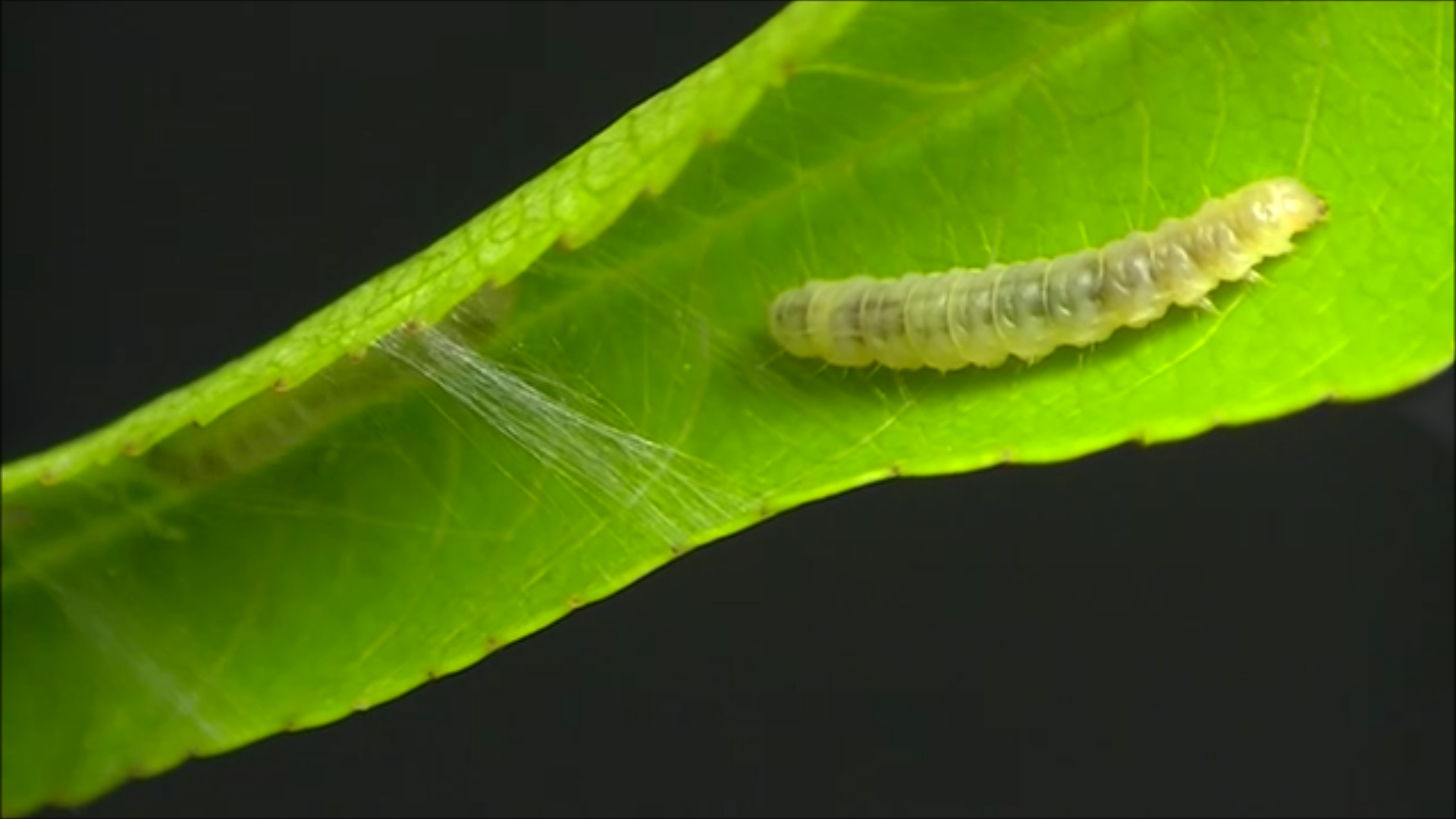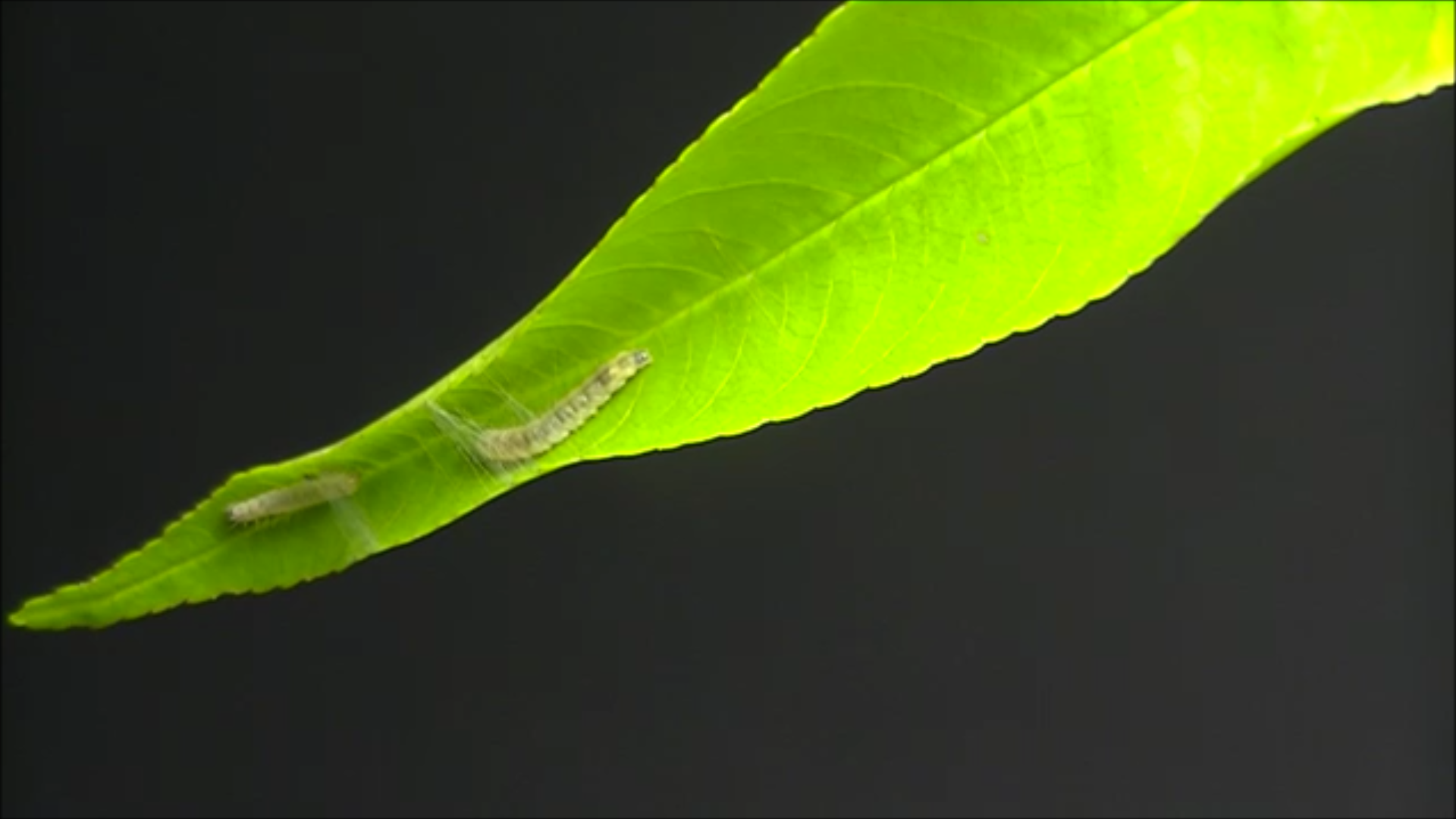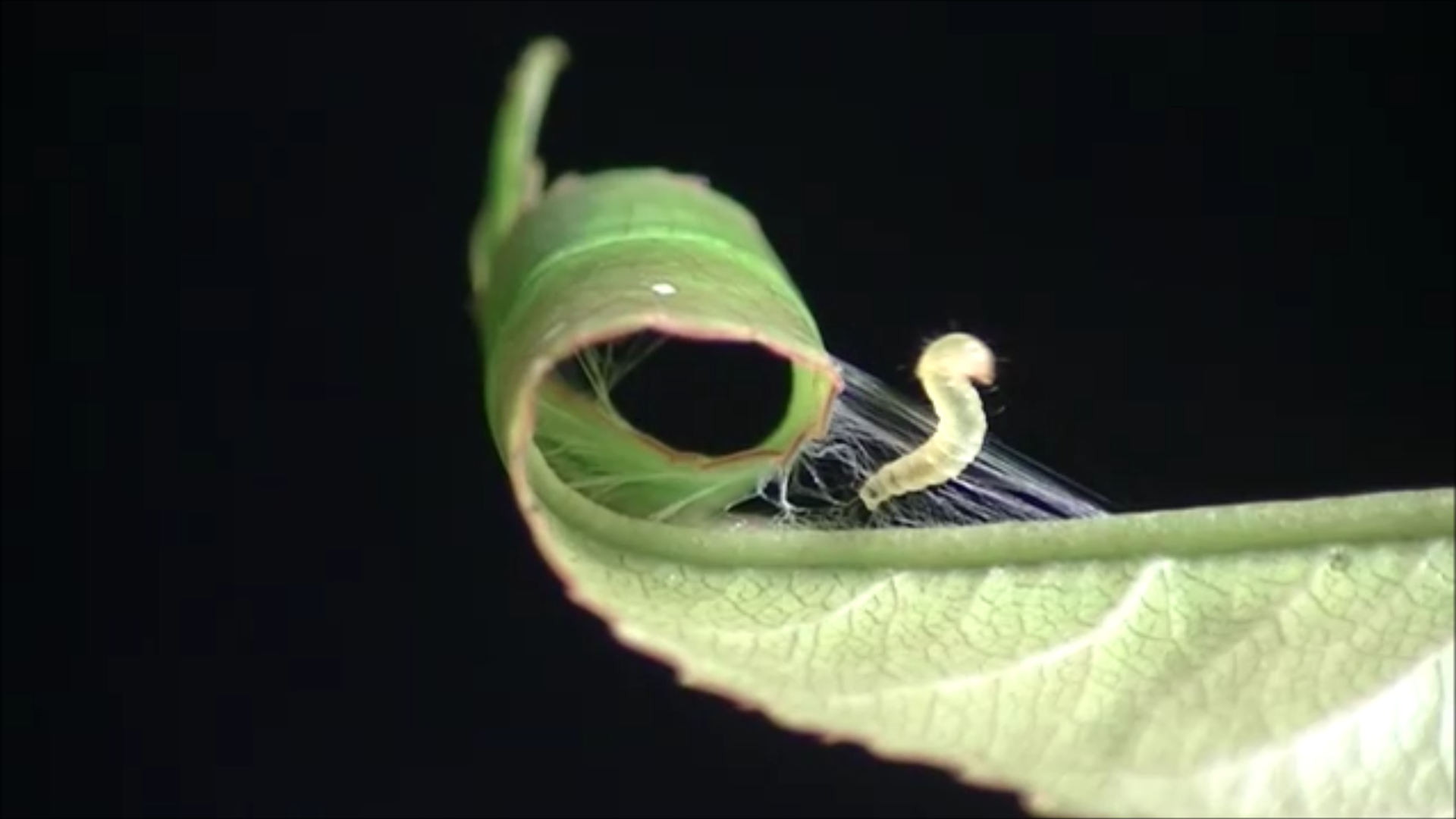Vibrational Communication in Social Caterpillars
The cherry leaf roller Caloptilia serotinella produces three signals: scraping, plucking and vibration. Scraping, the most common signal, is generated when the caterpillar swings the anterior portion of its body from side to side against the surface of a leaf. Plucking occurs when the caterpillar lifts it head and anterior body vertically, pulling up on the surface of the leaf. The vibratory signal is least common and is generated when the caterpillar vibrates its throax horizontally.
The cherry leaf roller Caloptilia serotinella (Lepidoptera: Gracillaridae)
The resident Caloptilia caterpillar (larger) drives away an intruder by scraping and plucking its mandibles against the surface of the leaf.



